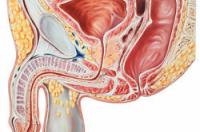VIDEO: Creating Equations in Chemistry
Requirements for equations in chemistry
You need to have some basic knowledge about the items in the chemistry if you have Equations have to set up.
- The elements have different values. Connections of elements are based on the fact that the values match. A single-valued element can bind to a single-valued element, or two single-valued to a bivalent, etc.
- When it comes to the connection of multi-valued elements, the LCM (smallest common multiple) helps to form the valences. For example, if you want to form equations with a three-valued element and a four-valued element, the LCM of three and four is twelve. So you need four atoms of the trivalent element and three of the tetravalent element.
- The value of an element is either given to you in the task, if the element can have different values, or it can be read off in the periodic table. Elements of the first main group are monovalent, that of the second two-valued, after the fourth main group it goes down again, for in the fifth main group there are three-valued elements in the sixth group two-valued and in the seventh group again monovalent.
- The atoms of the first four main groups can combine with all of the last three groups. Those of the fourth main group with all elements. The eighth main group is an exception, because noble gases do not combine.
- You also have to take into account that some elements only ever appear as a molecule. You can remember these with the word "Brinclhof", because they are Br (bromine), I (iodine), N (nitrogen), Cl (chlorine), H (hydrogen), O (oxygen) and F (fluorine).
Value of copper - that's how you understand chemical bonds
With the same reaction partner, copper can form different substances ...
Once you know these basics, you can easily set up equations in chemistry.
Establishing reaction equations
Here are a few equations you can use them to create.
- Hydrogen and chlorine: This reaction equation is simple, because Bede substances occur in molecular form and are monovalent. The following applies: H + Cl> HCl.
- Since both substances are present as a molecule, multiply the equation by 2, you get: H2 + Cl2 > 2 HCl. One molecule of hydrogen combines with one molecule of chlorine to form 2 molecules of HCl.
- Hydrogen and Oxygen: Hydrogen is monovalent, oxygen is bivalent. So you need 2 atoms of hydrogen and 1 atom of oxygen: 2 H + O = H2O.
- You have to multiply that by 2 again, because the substances only exist as molecules, you get.
- Iron (III) and oxygen: The "III" refers to the valency of iron, so it is about trivalent iron. KgV of 3 (iron) and 2 (oxygen) is 6; So you have to combine 2 atoms of iron with 3 atoms of oxygen: 2 Fe + 3 O> Fe2O3.
- Now, because of the molecular presence of oxygen, you have to multiply by 2 and get: 4 Fe + 3 O2 > 2 feet2O3.
How to set up the equations
Investigate the value of the fabrics that you are supposed to connect. Pay attention to the task or pull the Periodic table added.
- Use the LCM to calculate how many atoms you need of each substance.
- Set up the equation without considering whether substances are always molecular.
- Check whether there are only molecular substances in the equation.
- If so, then multiply the equation by two. Note that non-molecular substances are pre-doubled by adding the two (or the product of two and the number of atoms or the number of atoms) in front of the substance. Elements) appears and, in the case of molecular substances, the two appears as an index behind it.
You see, it isn't that complicated when you have to do equations in chemistry.


